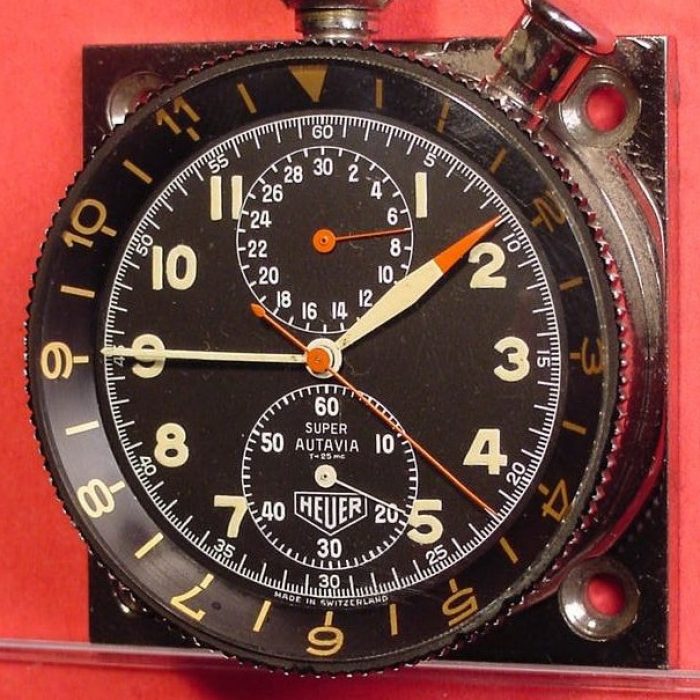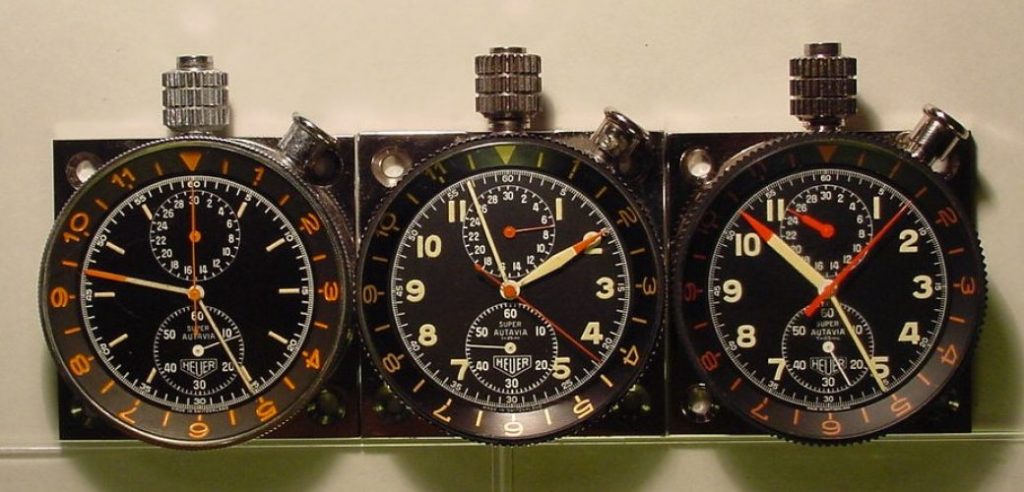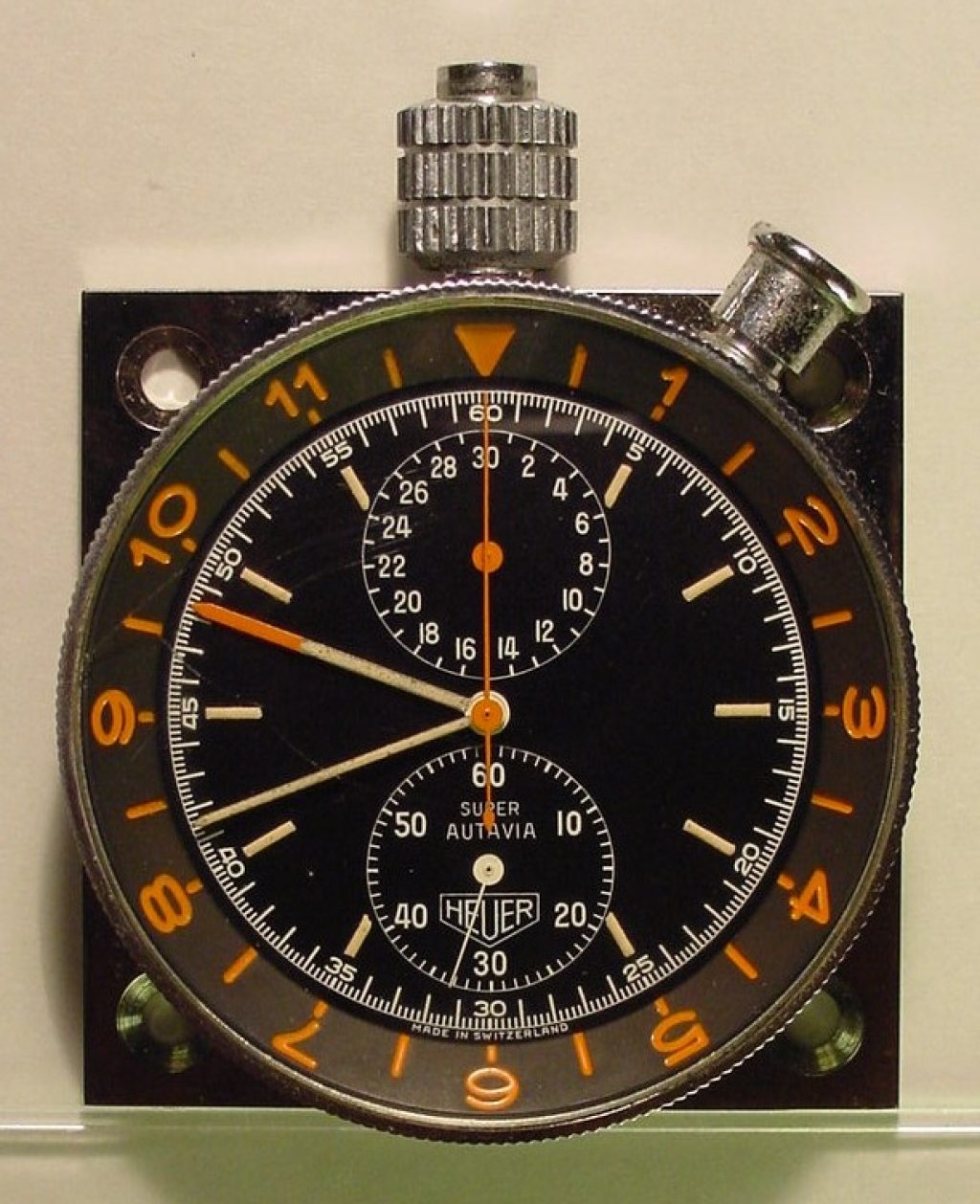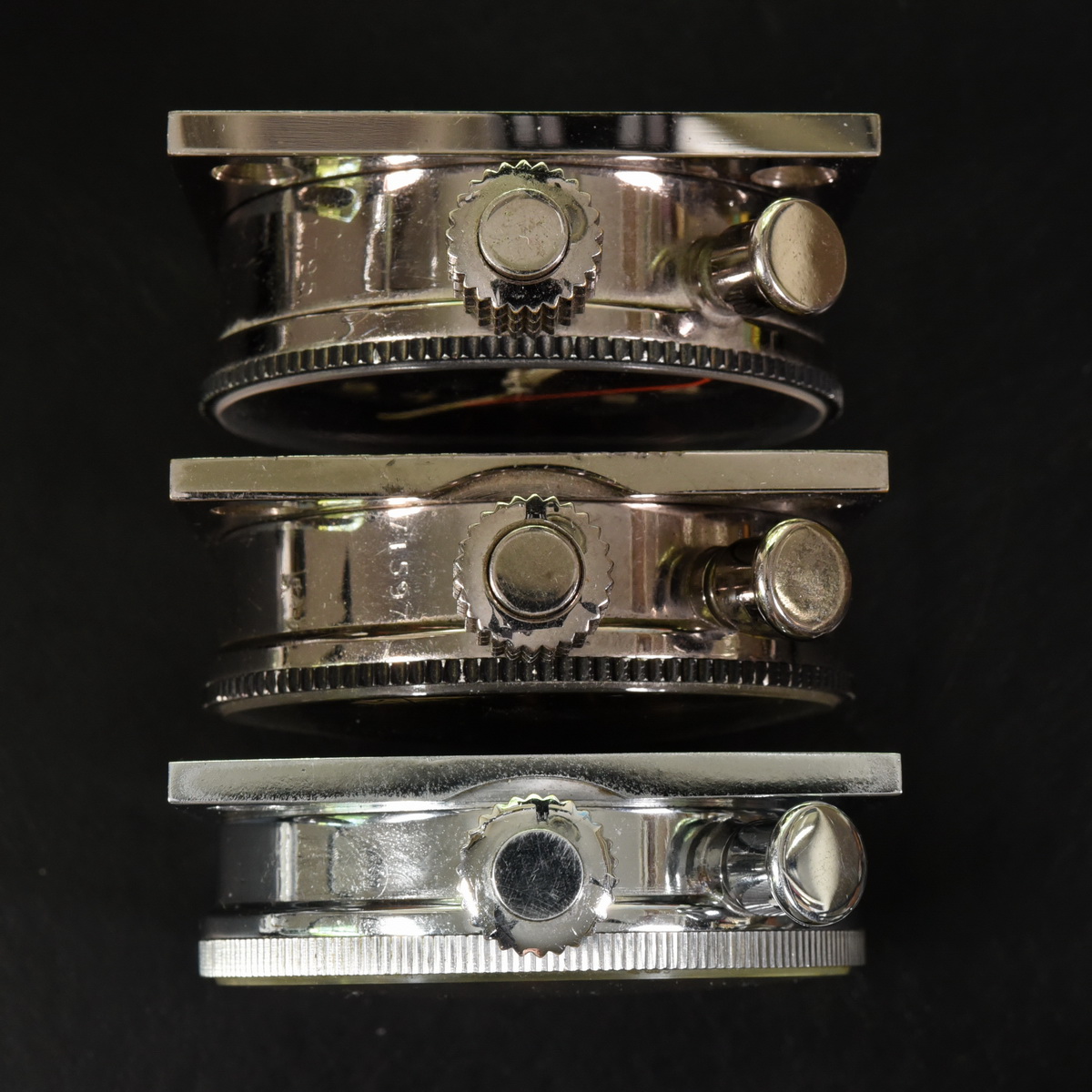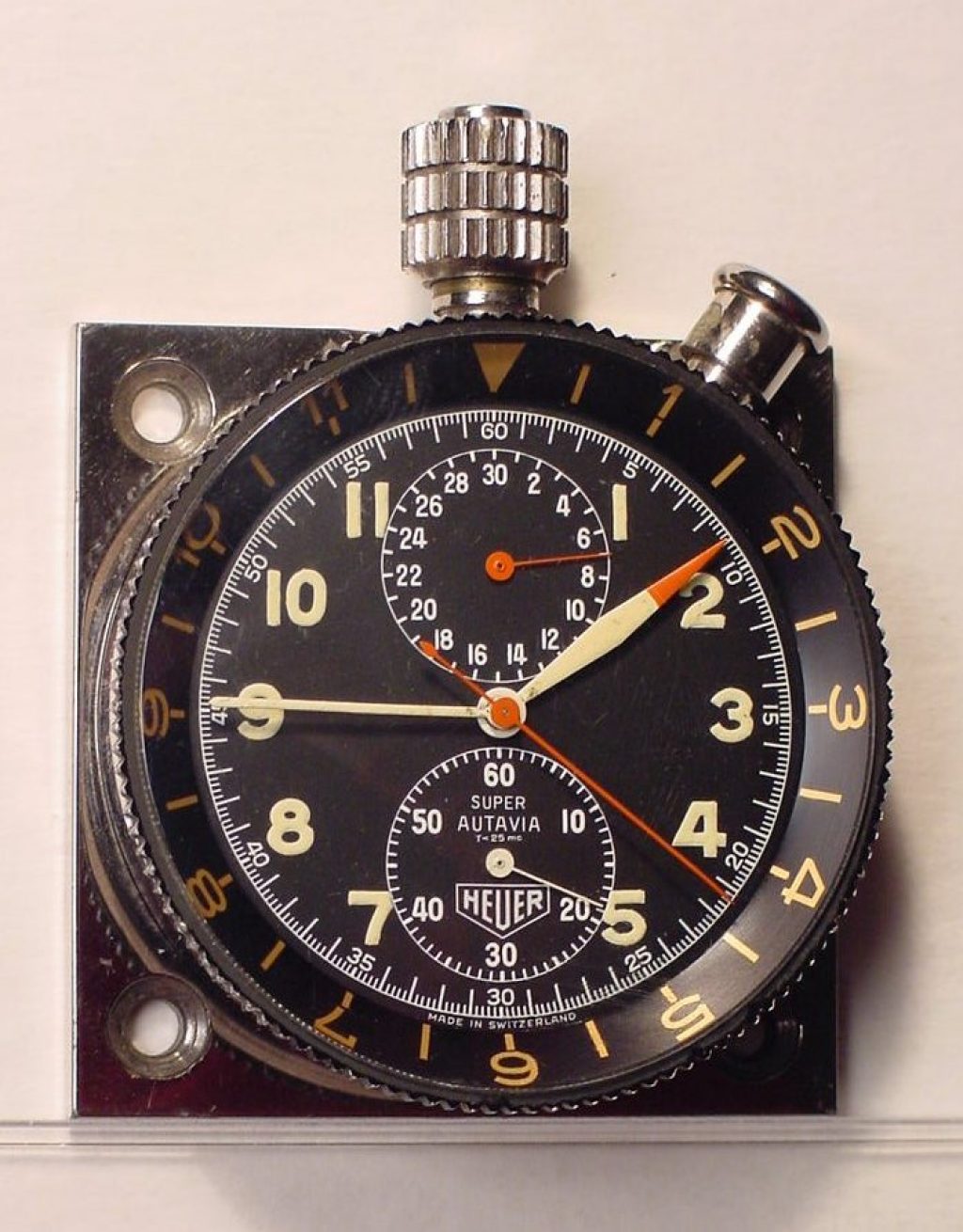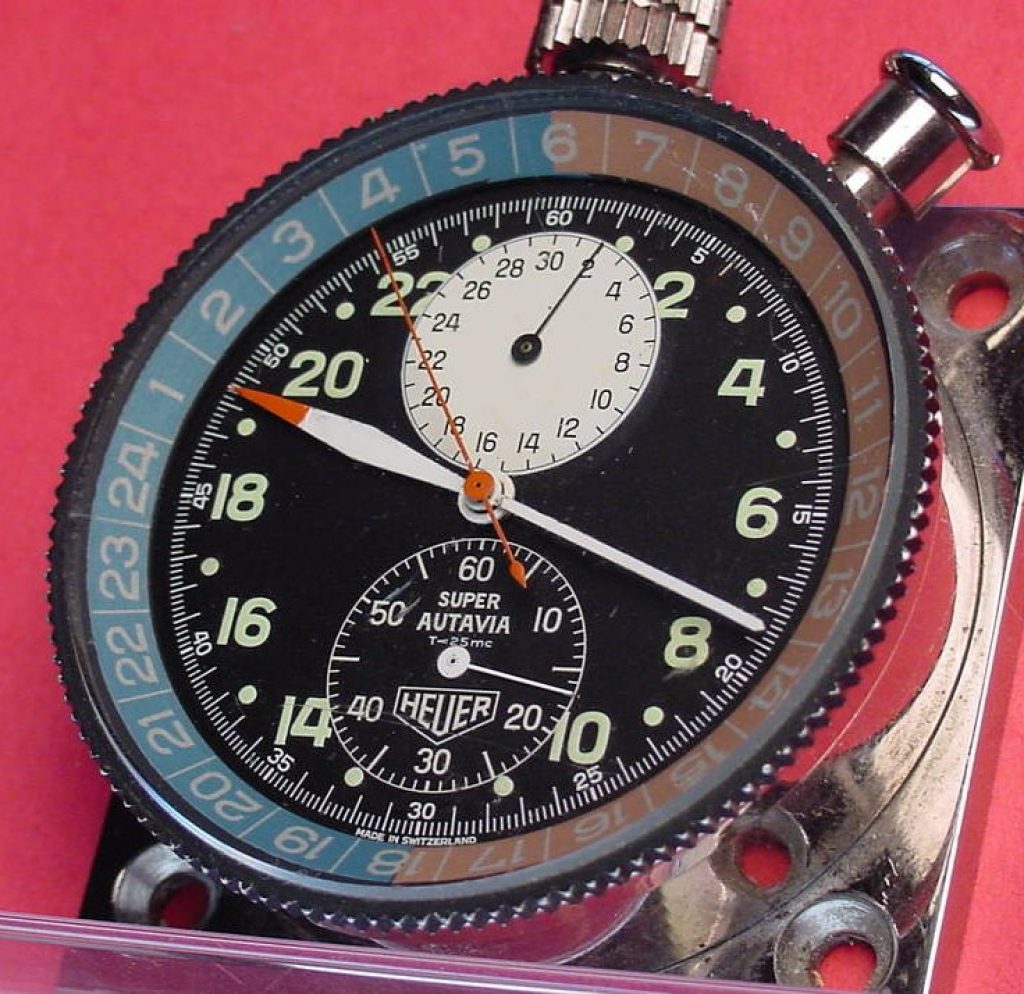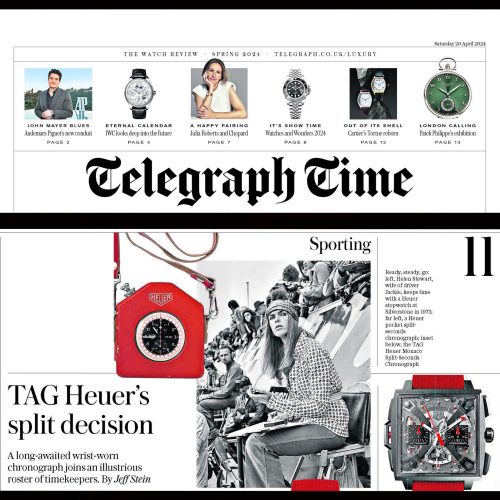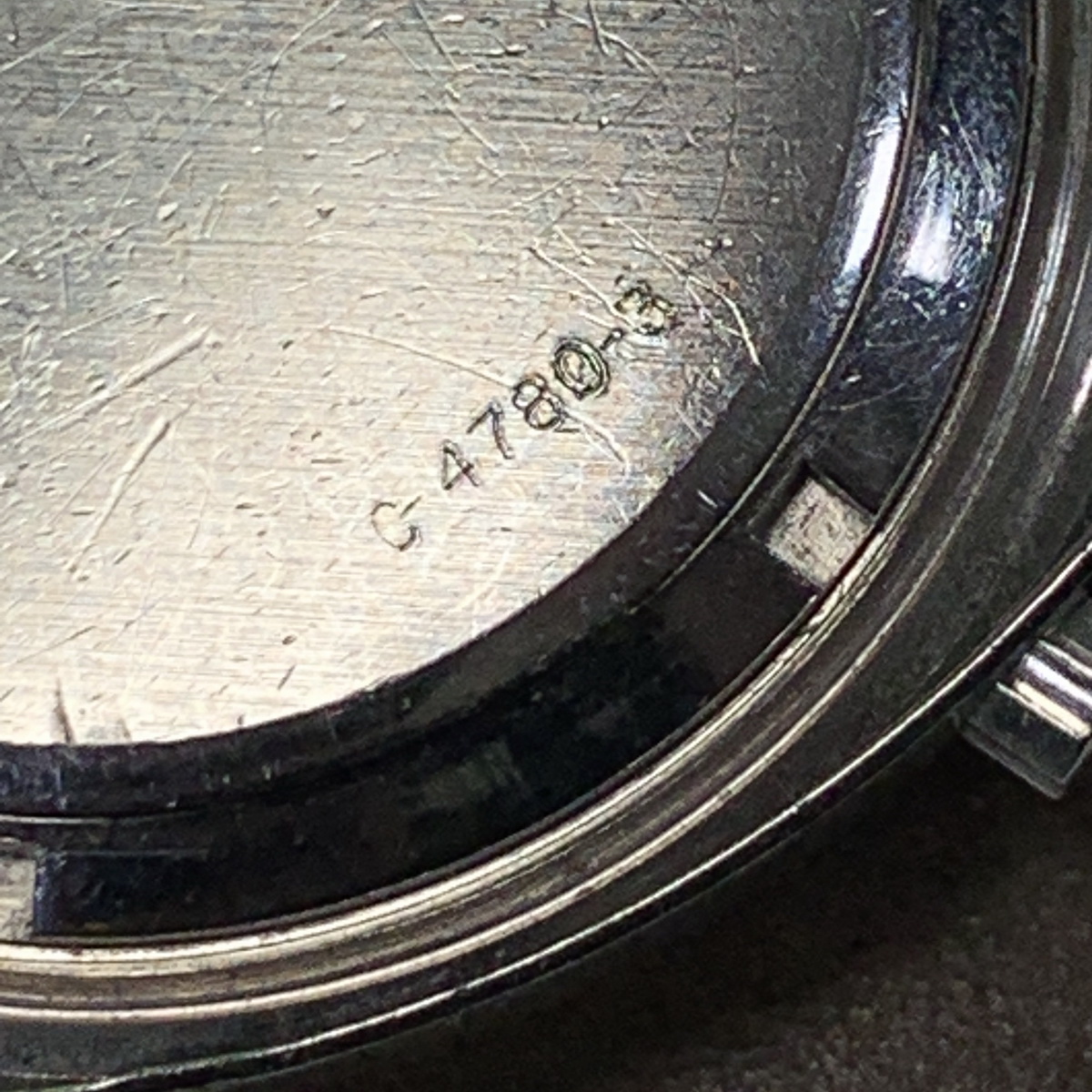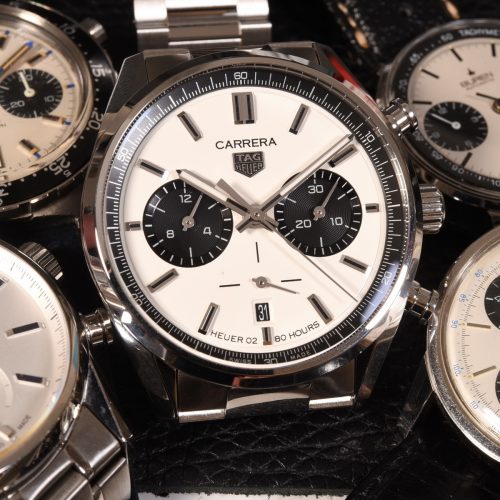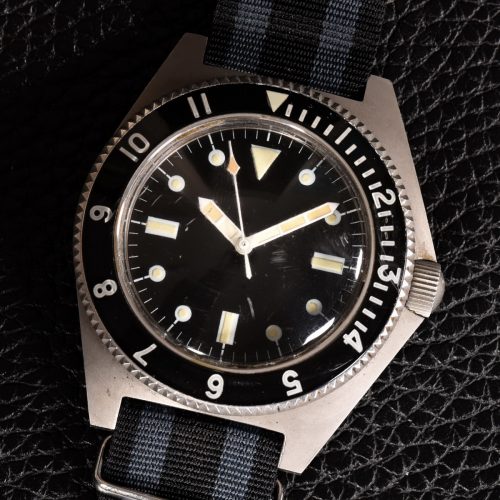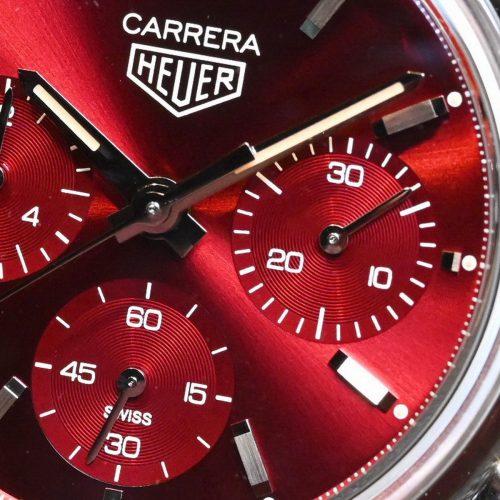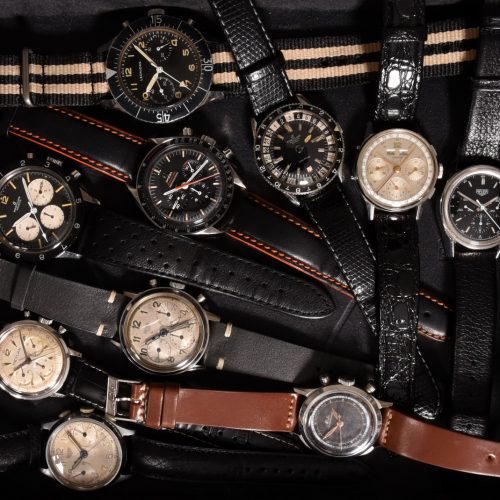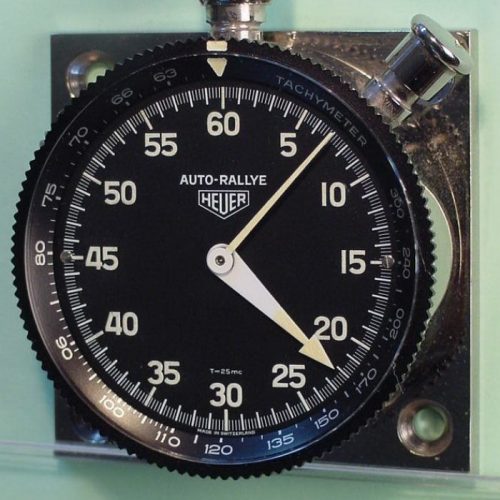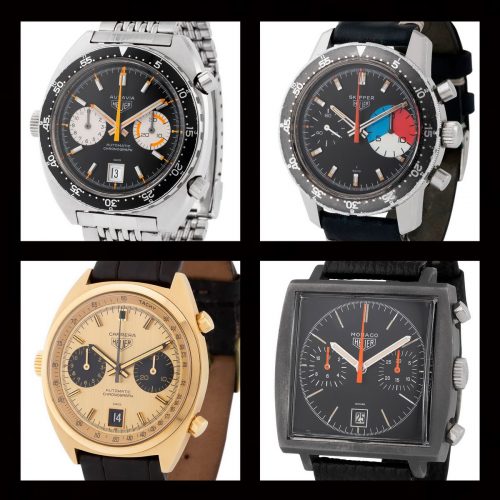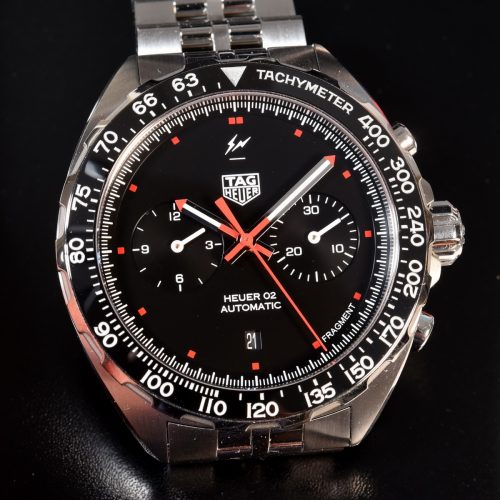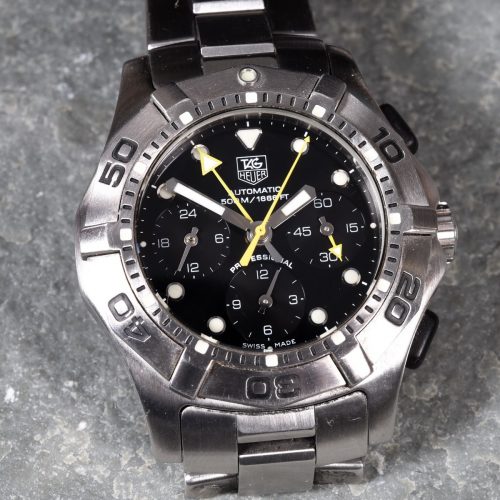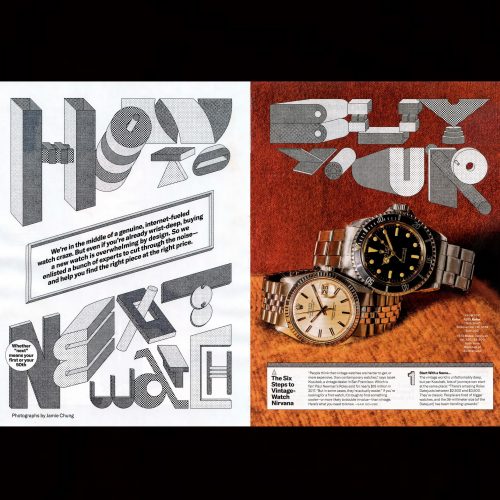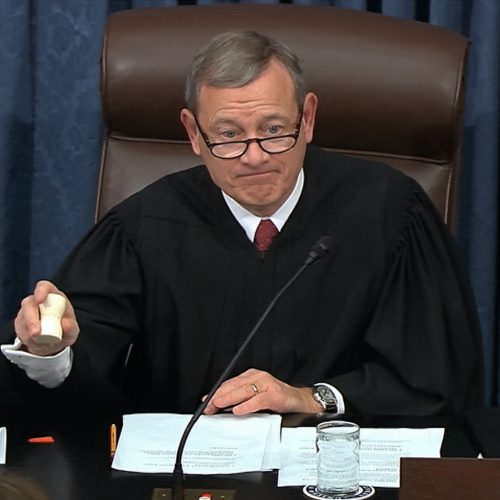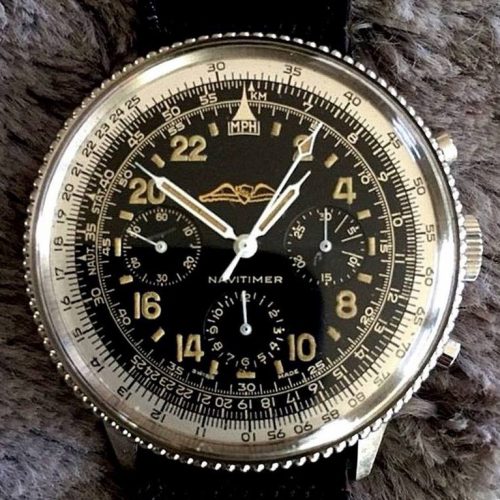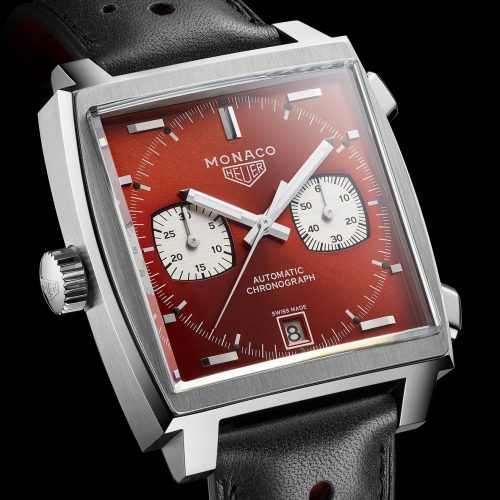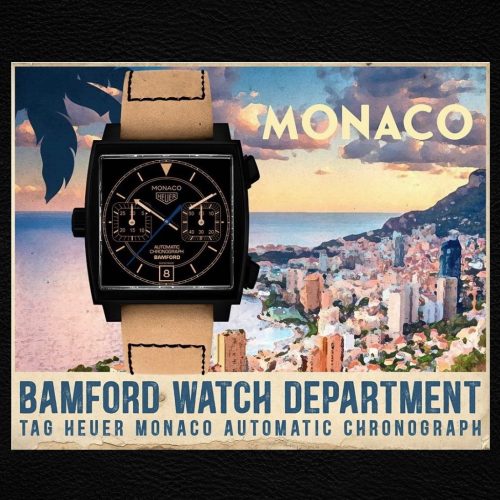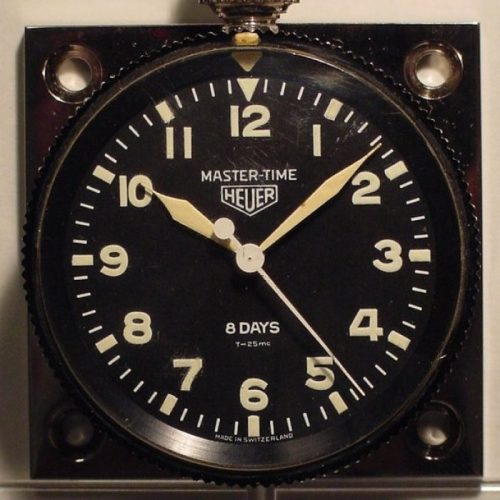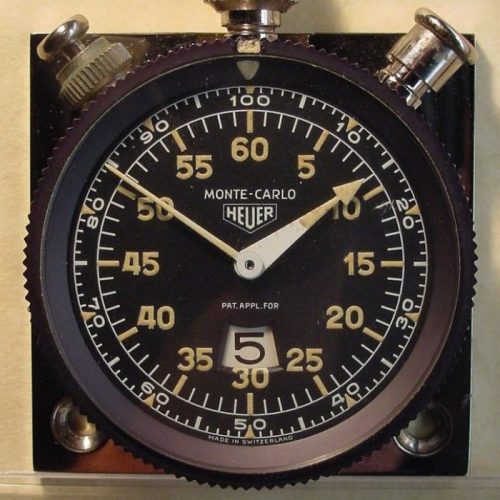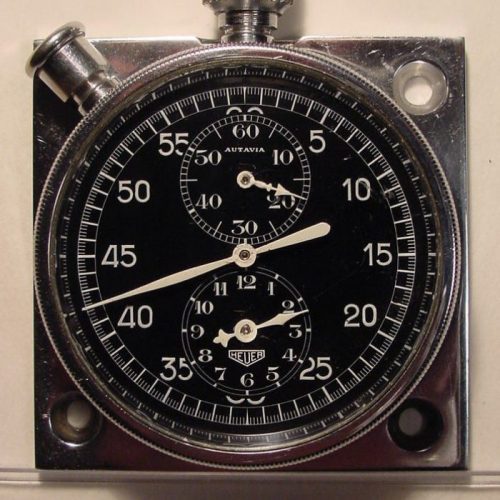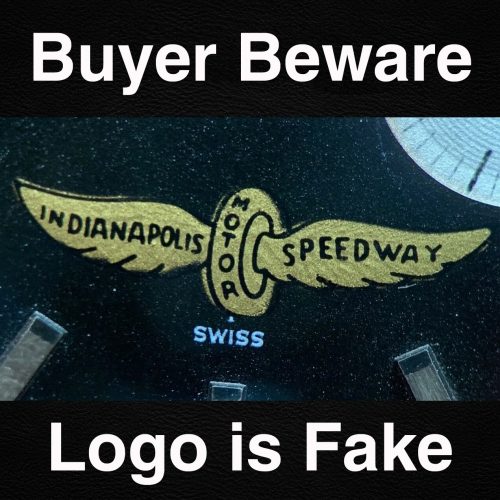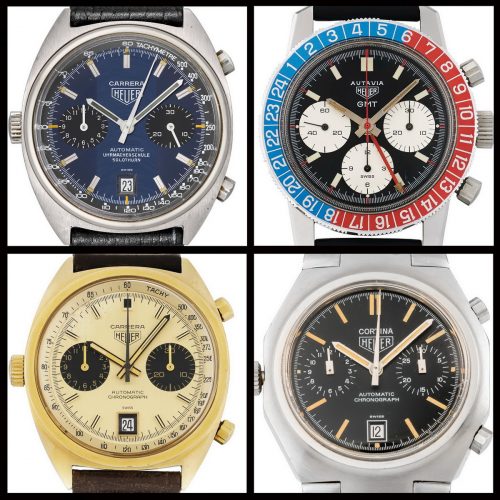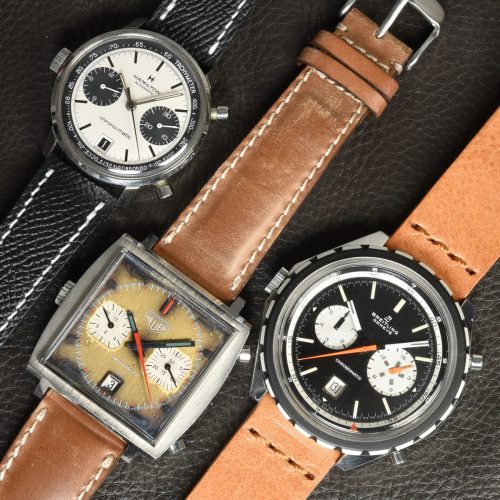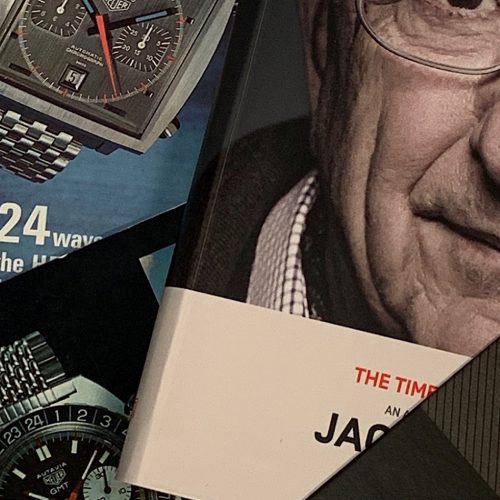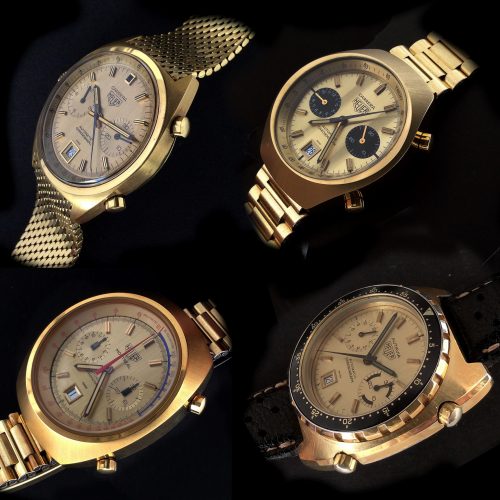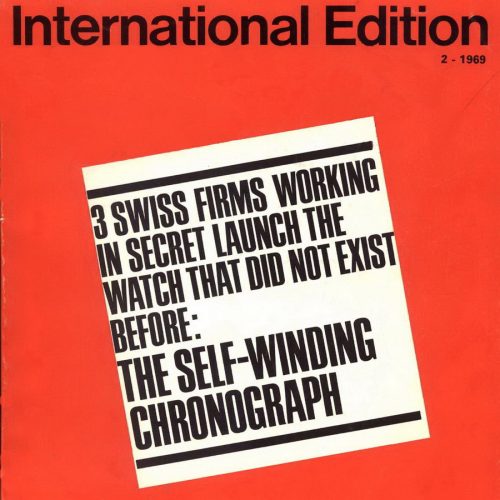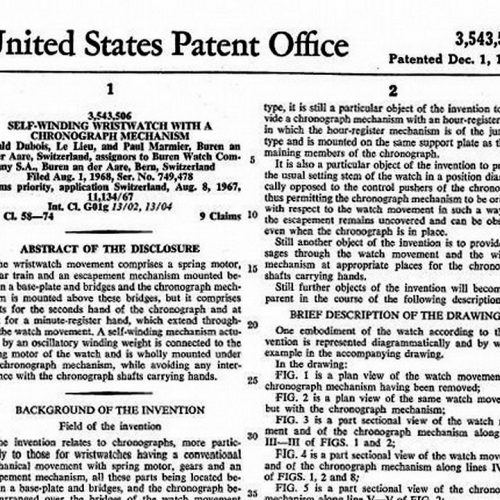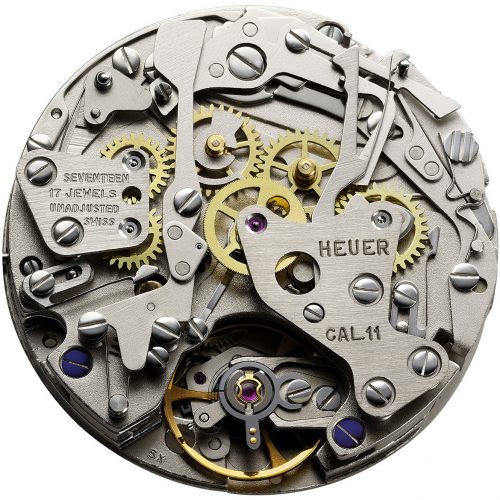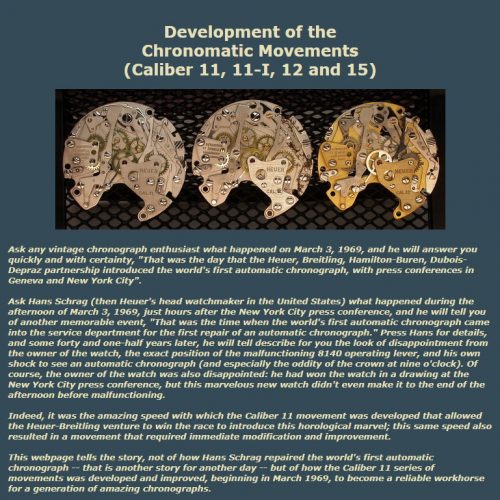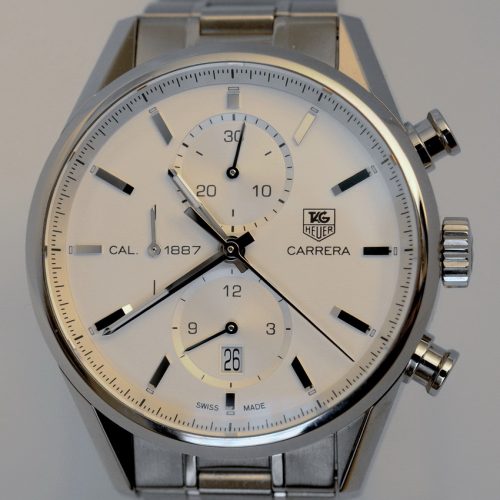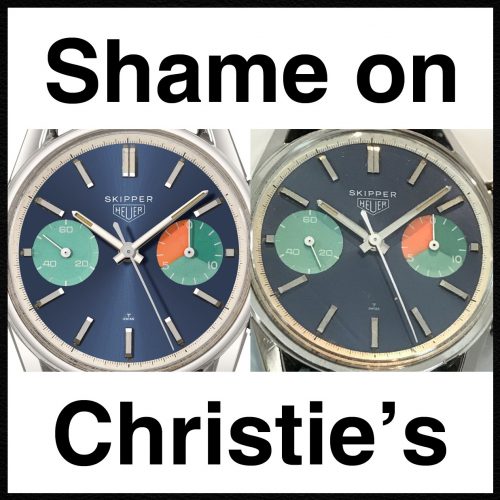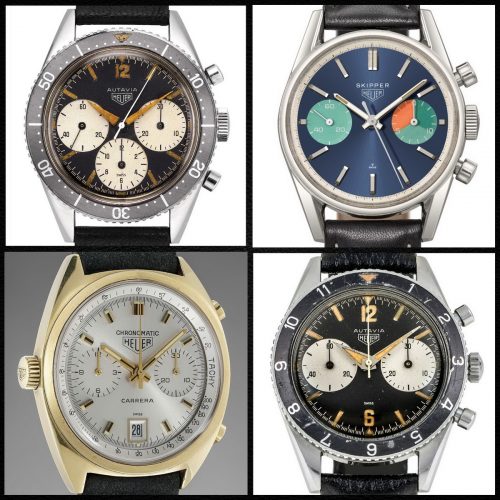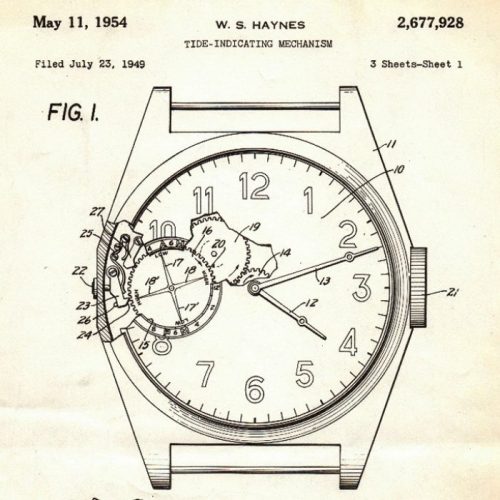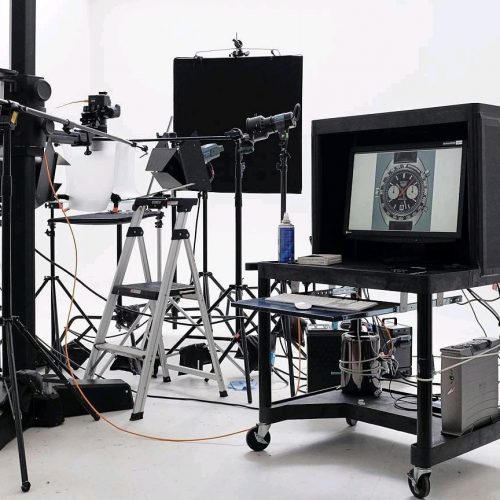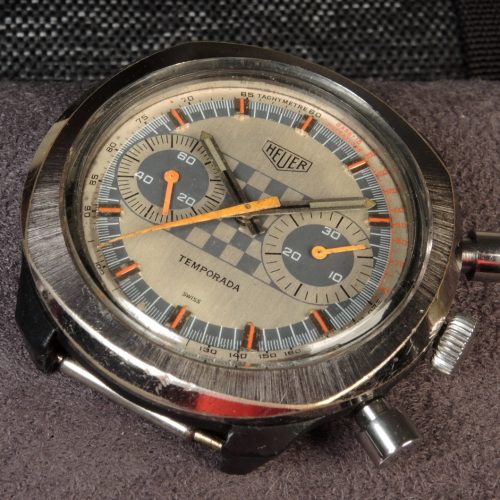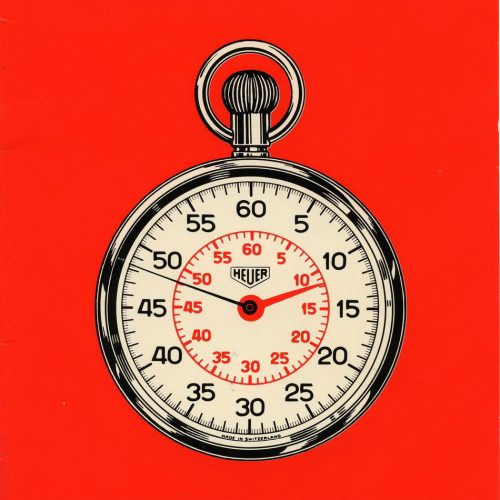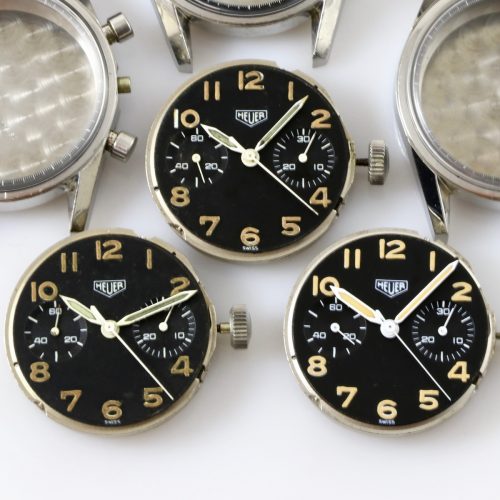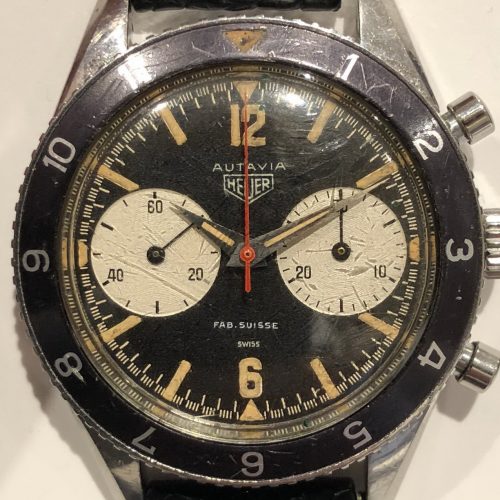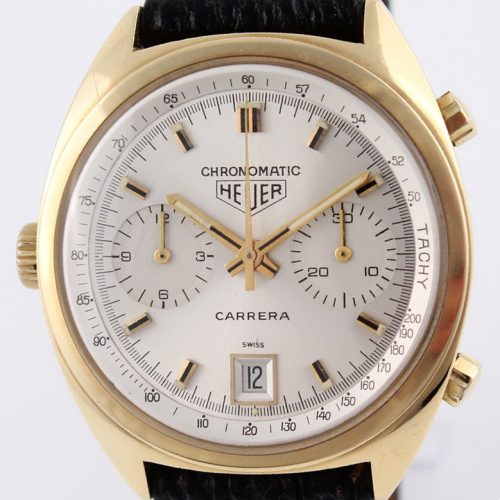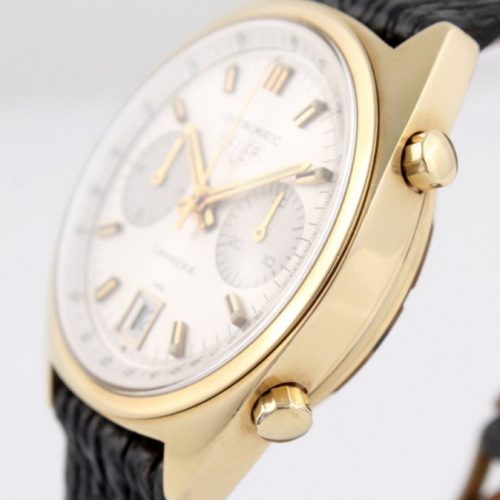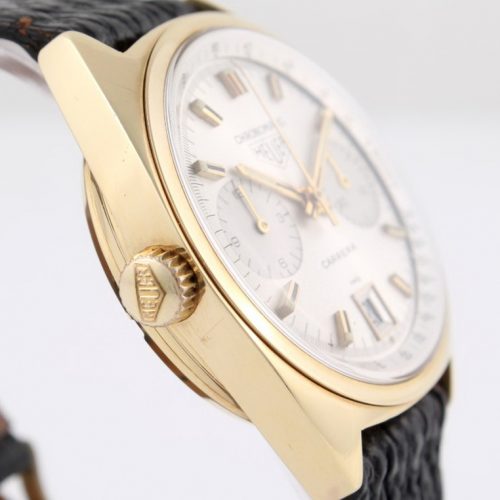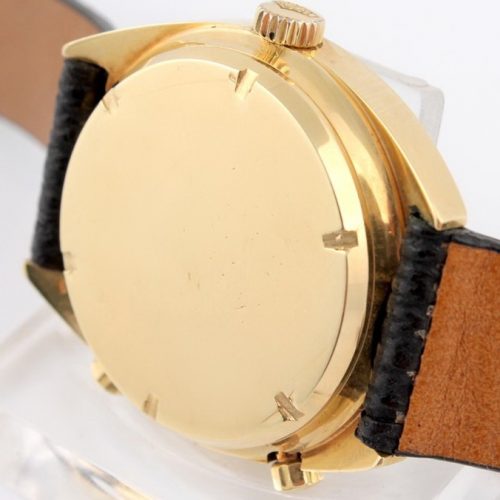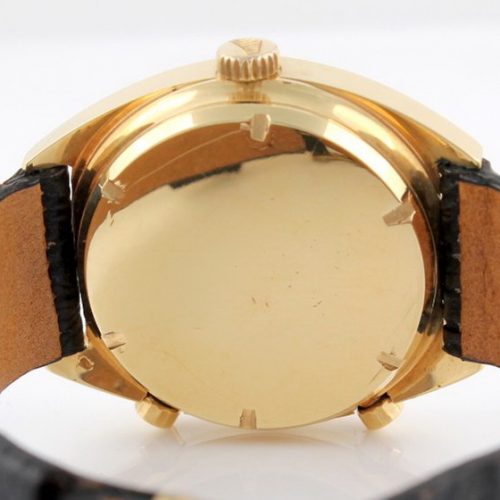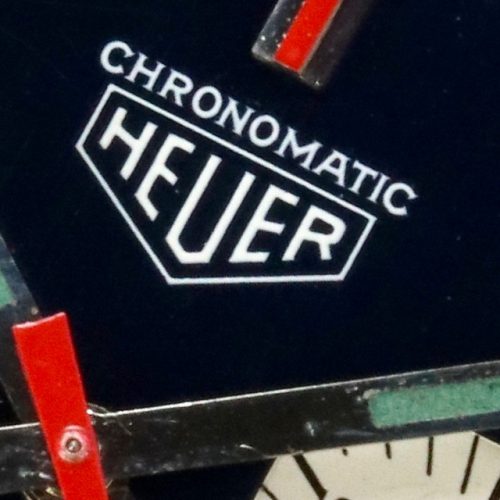Introduced in 1958, the Super Autavia was hailed as the first dash-board chronograph for motorcars, power boats and airplanes. The headline in Heuer brochures of the period proudly announced that the Super Autavia shows simultaneously Time of Day and Time of Trip. For many collectors and enthusiasts, the Super Autavia is the ultimate Heuer dashboard timepiece, not merely a clock or timer, but a true chronograph (combining a clock to show the time of day and a stopwatch with 30 minute capacity).
See the OnTheDash section covering the Super Autavia HERE. An instruction booklet for the early Super Autavia is HERE.
The Super Autavia functions are as follows:
- Time of Day (Clock) is read as on a standard clock, with white hands for hours and minutes, and a seconds register at the bottom of the dial (6:00 o’clock). Heuer referred to this as the Super Autavia’s “White System”.
- When the crown is pulled out, the movement stops instantly, allowing synchronization with a radio time signal or other source of “official” time (referred to as a “hack” feature). Pushing down the crown to its normal position starts the movement again.
- Time of Trip (Stopwatch) is indicated by what Heuer called the “Red System” – hours and half hours are read by the red-tipped hour hand against the red divisions on the turning bezel; minutes are read by the red hand on the small minute dial (at 12:00 o’clock); and seconds (accurate to 1/5 seconds) are read by the red center second hand.
- The button in the crown starts and stops the stopwatch; the right pusher resets stopwatch hands to zero (when stopwatch has been stopped)
The Super Autavia utilized three cases and two movements over its lifetime, as follows:
- 1958: Super Autavia introduced as a new model, when Heuer redesigned its line of dash-mounted timers (Master Time, Monte Carlo, etc.); first Super Autavia dial has baton markers for hours, which match the “stick” hands; first execution Super Autavia case is chromium coated, low-profile (11 millimeters to the bottom of the bezel); bezel is snap-on, coin-edge, with red markings; movement is Valjoux 76.
- In next execution, hour markers on dial changed from batons to Arabic numerals; hour hand changed from baton shape to sword shape.
- Second execution case — Case is thicker and coated with “Profectus”. Thickness of case is 13 millimeters to the bottom of the bezel; construction of case and bezel matches that of Heuer’s new series of timers, the Master Time, Monte Carlo, etc.; bezel numerals and markers printed in gold tone. Case is coated with “Profectus”, a proprietary material used by Heuer that is darker than chrome.
- Movement changed to Valjoux 5
- 1967: Third execution case for Super Autavia is deeper (15 millimeters to the bottom of the bezel) to match updated versions of Master Time, Monte Carlo, etc.; all hands are now wider, to match the larger size of the case.
- 1970: True 24-hour movement introduced, using modified version of the Valjoux 5
For additional photos illustrating the differences between the various versions of the Super Autavia, see our Comparison of Super Autavias page.
